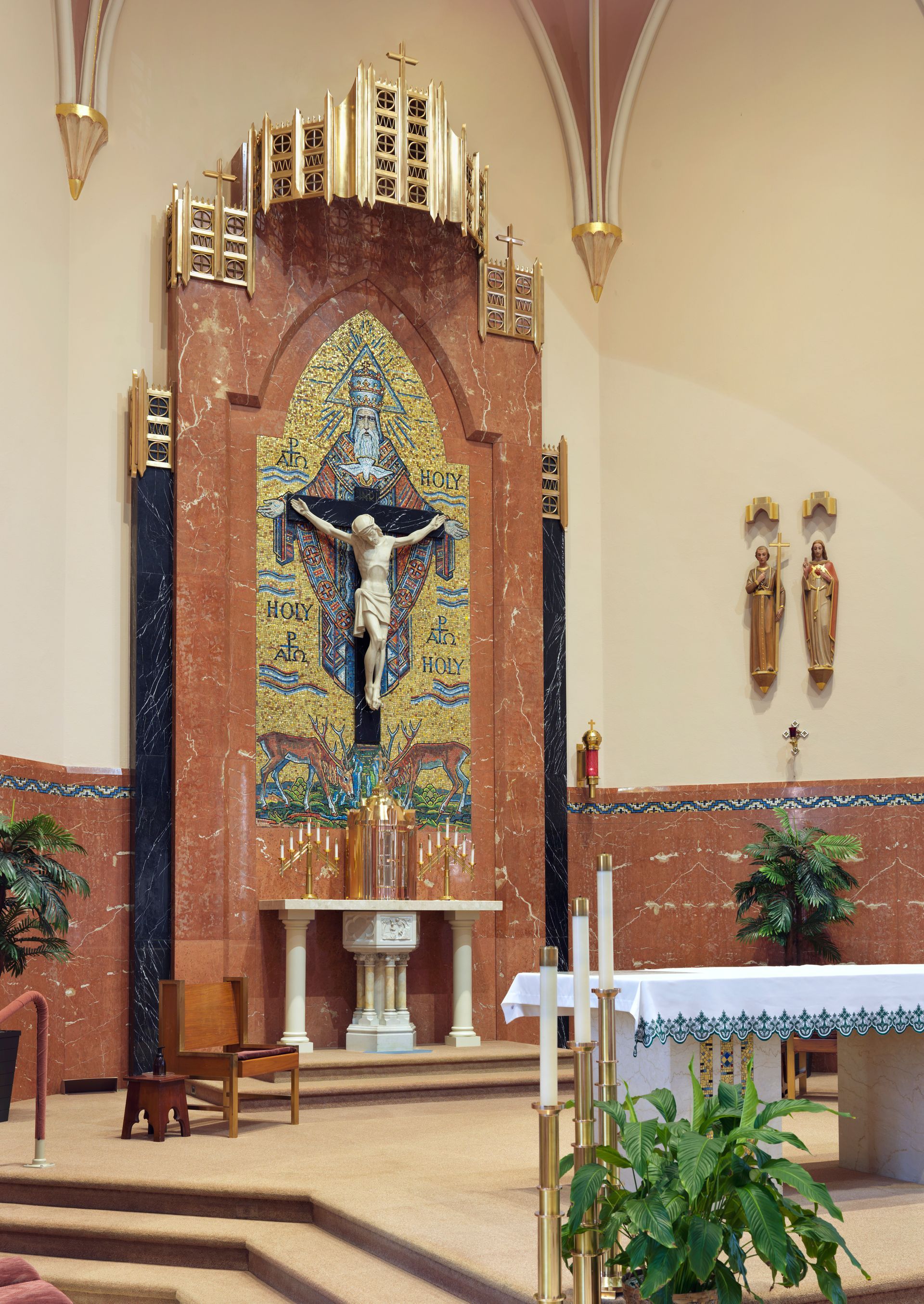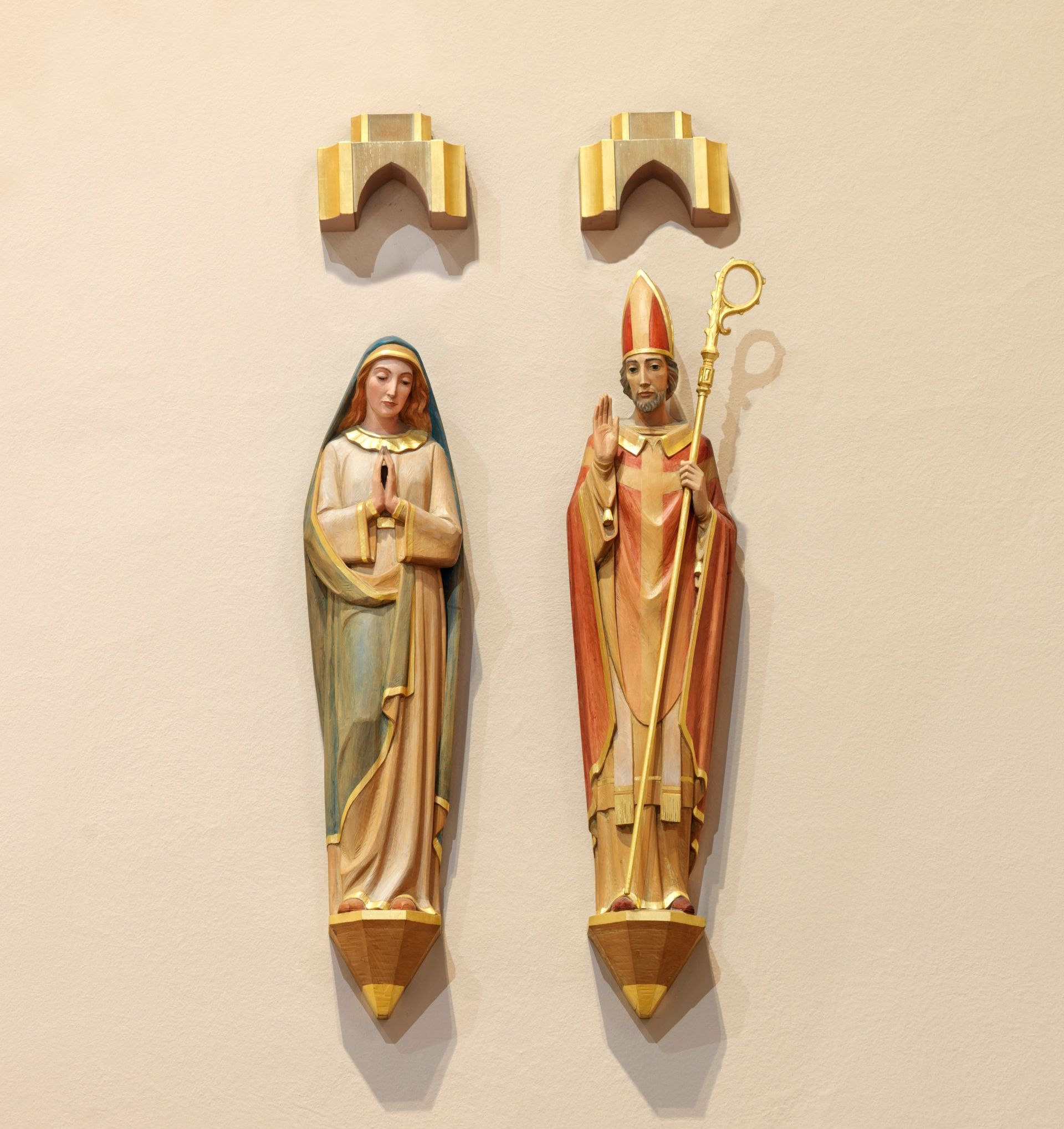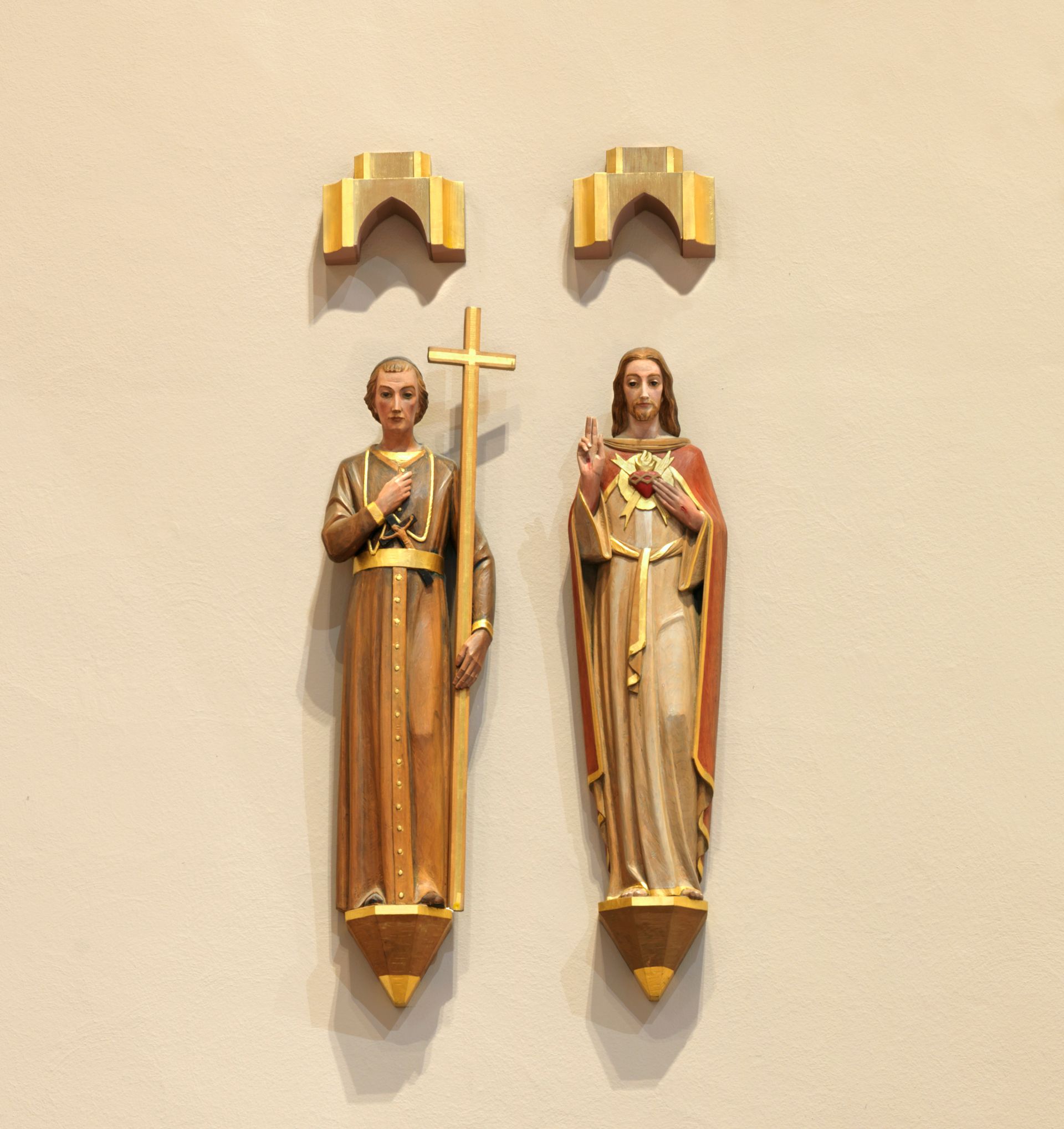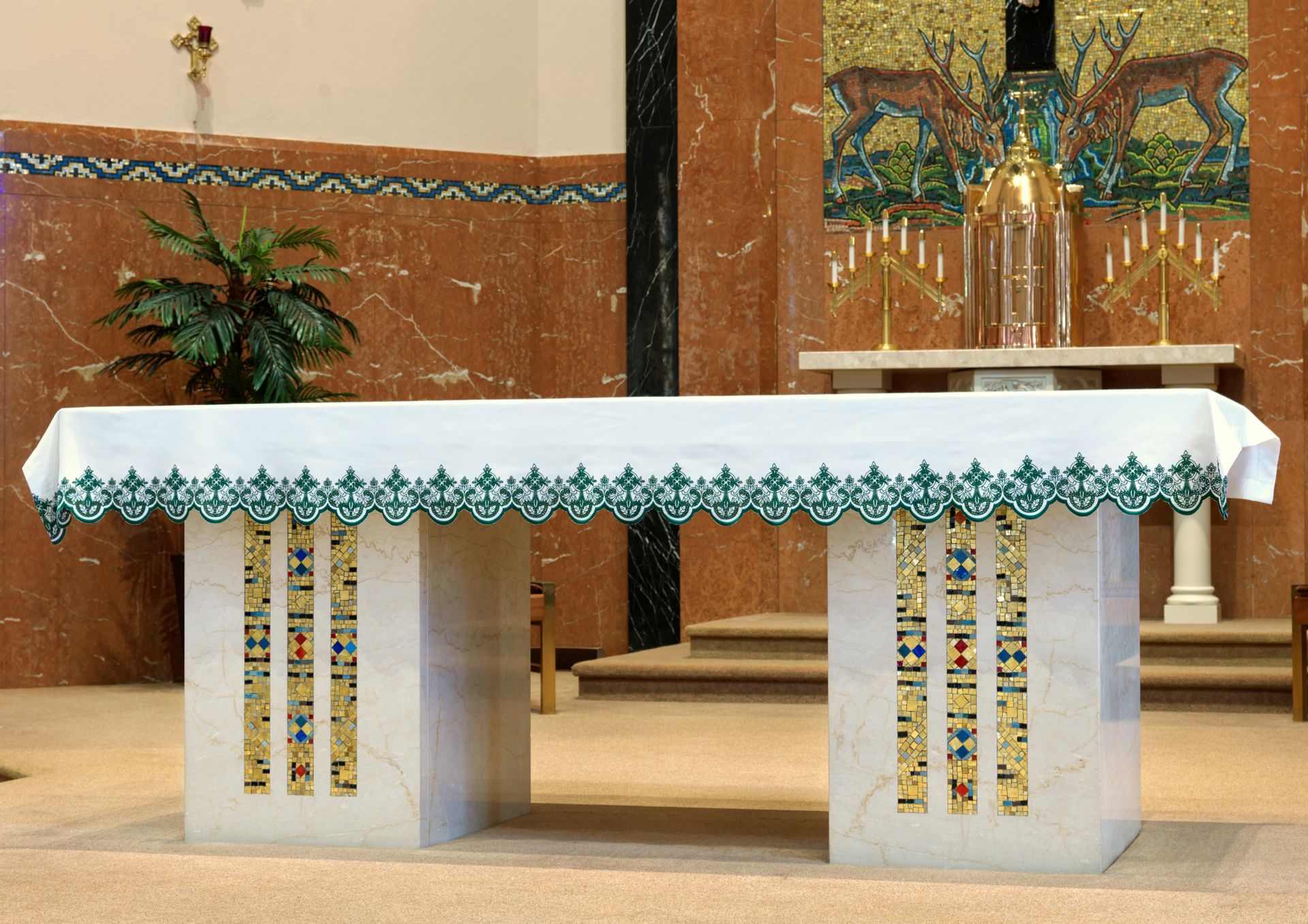The Main Altar

The central mosaic behind the main alter is based upon a painting The Blessed Trinity by Albrecht Durer, who died in the early 16th century. The mosaic and superimposed crucifix depict God the Father giving himself through his Son, Jesus Christ. It is with Christ through the life of the Holy Spirit (the dove) that we return to the Father. The Father wears a three-tiered crown which represents God’s rule over the three classical divisions of the Church: militant, suffering and triumphant.
Behind the crown is a triangle symbolizing the Holy Trinity. Below the cross the deer, which represents all Christians, drink from the fountain of life, the sacramental life of the church. The Greek letters of Alpha and Omega refer to Christ as the beginning and ending of life. They are located beside the Chi-Rho which are the first two letters of the Greek word for Christ.
Rudolf Scheffler designed the alters and chose colors which recall the constellation of aurora borealis and allude to Christ, the Eternal Flame.The inspiration for the design came from Italian Fiume on palace tapestries so admired by Victor Emmanuel, who had commissioned a number of paintings from Scheffler.
The large crucifix on the rear wall is of blue belge marble. The corpus, body of Christ, and the two statues of Mary and Joseph on the side alters are made of Italian botticino marble and were sculpted by the Mioczi Studio in Pietrasanta, Italy.


There are two statues on either side of the central mosaic. On the left are St. Augustine, the patron of the parish, and his mother St Monica. On the right there are the Sacred Heart of Jesus and St. Gaspar del Bufalo, the founder of the Society of the Precious Blood These four statues were carved of linden wood by Leopold Moroder, of Oberammergau, Germany.
Witold Liskowiak coordinated the decorating scheme of the church. He had his own studio, which he began in 1941 after having attended art schools in Poland and Milwaukee. He set the mosaic in a marble reredos of rich red Spanish altico of exceptionally fine quality and framed it with slender columns of blue belge. Then he extended a bronze baldacchino over the mosaic to provide an elegance suited to prayer and awe.

The height of the sanctuary and mosaic called for a sizable alter. Liskowiak designed an 8’6” by 3”’6” alter of creamy Italian botticino marble embellished with mosaic inlays.
At the time of the church’s remodeling, communion rails were still being used. So, Liskowiak used red Spanish altico marble and wrought bronze to bring a sense of unity to the sanctuary. Thus he achieved an overall unity in the sanctuary and in the church which continues to inspire everyone to say “How good it is to go up to the house of the Lord”.


